It's late in the afternoon. The water is dark and an especially large amount of plankton reduces the underwater visibility to a minimum. Some time ago it occurred to me that with such poor underwater visibility I could probably forget about the object of my visit, to take underwater photos of the great white shark. Like many previous occasions, I am sitting at the boat's stern between the two 80 HP outboard engines, the camera levelled. Through the viewfinder I am watching the neoprene seal-dummy which our little boat is pulling behind it on a fishing line. I support my arms on my knees, to ease my tense muscles. In the past I have often had to remain in this position from the early afternoon until sunset, through heavy swell, rain and storms, just to take the picture of my dreams - a breaching white shark, leaping for prey. Until now, all my efforts have been in vain.
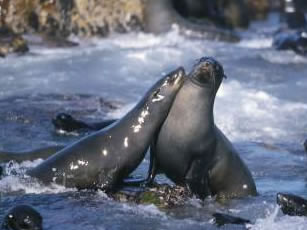
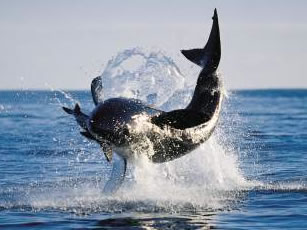
Dyer Island is located six nautical miles off the coast of Gansbaai (170 kilometres south-east of Cape Town), on the opposite side of which is the small island known as Geyser Rock which is home to an estimated 60,000 South African Fur Seals. As long as the seals stay ashore, they are safe. But when they leave for the open sea to catch fish, they have to negotiate a dangerous shark-infested channel between the islands called "shark alley" which, not surprisingly, is reputed to the best place in the world to watch white sharks.
The sharks patrol mercilessly here, and there is no way to escape them. The seals run the same gauntlet when they return to the island, and those swimming alone, and very young seals swimming close to the surface, face the greatest threat.
This is the scenario we have attempted to reconstruct in this case, with the hope of luring a white shark to reveal itself to the camera. For hours I have been keeping my lens pointing at Koekie, the artificial neoprene seal bobbing along behind the boat. Suddenly, a huge and very heavy body is rocketing out of the water like a torpedo. It has "Koekie" in its mouth. Everything happens in a split second.
It's a precise attack with a fatally perfect timing. A real seal would not have stood the slightest chance. Every single square centimetre of this exquisite creature is vibrating energy. An unforgettable sight. The incredible dynamic of the leap is captured in the picture.
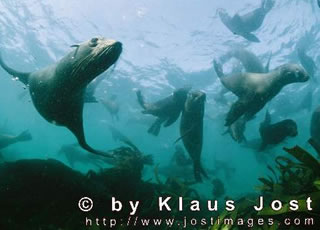
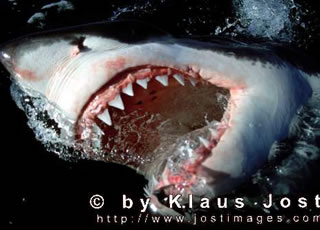
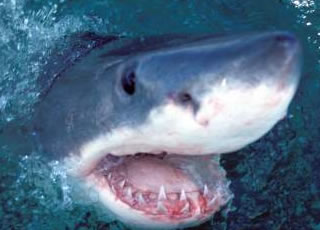
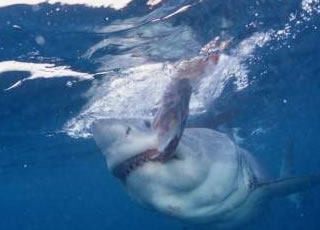
The cause of this unpredictable and unusual attack seems to be the movement, the form and the size of the prey. Until now, such breaching sharks have only been observed in the False Bay and nowhere else in the world (see Peter Benchley/David Doubilet, Great White, National Geographic April 2000).
The great white shark (Carcharodon carcharias) has been around for at least 3.5 million years, but now it is acutely threatened by extinction. It remains to be seen whether the species is already "genetically extinct" - in other words there are so few individuals left that the survivors are genetically very similar to one another and are less likely to be able to withstand other insults that nature can throw at them. The number of sharks, of all kinds, caught every year is estimated at 100 million. Half of it is 'bycatch', which is thrown away. With this overfishing the shark population is irreparably damaged. Due to the decimation in their numbers, which has lasted for decades, and their low reproduction rate, the prospects for the great white shark do not look good. And even though, since last autumn, it has been internationally protected, supervision of the ban on fishing has not been easy.
But perhaps modern science will be able to help at the last minute - at least in this area. A new, very specific rapid test, which only picks up material from white sharks, is able to prove almost error-free, if there are any parts or remains of white sharks in a sample, which would constitute an infringement of the prohibition. This biochemical test, called Pentaplex PCR test or bi-organelle test, was developed by Prof. Mahmood Shivji of the Nova University in Florida, USA.

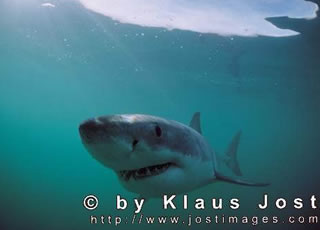
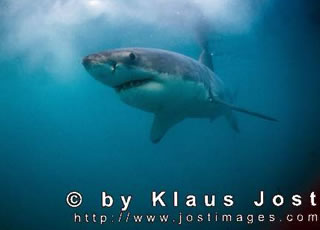
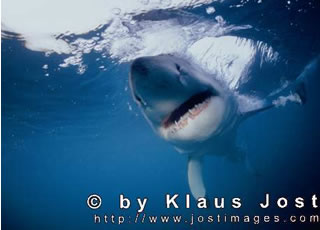
Part of the image problem facing sharks is thanks to the movie "Jaws". As one review I came across put it, "Peter Benchley's world bestseller has become a Blockbuster, which changed the untroubled relationship between humans and the sea and its inhabitants forever. The primal fear of the danger from the depths was given a fearsome face". Peter Benchley, the author of "Jaws", has since become one of the world's most prominent shark protectors. His latest book is titled "Shark Trouble. True Stories About Sharks and the Sea".
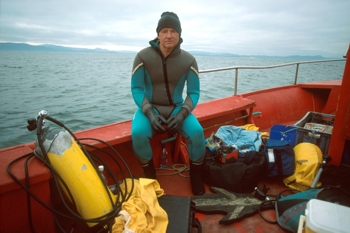 Sharks play an important role in the ecosystem of the sea and they have always fascinated me. I have been responsible for extensive underwater work in many large harbour construction projects all over the world, usually under conditions of poor underwater visibility. Altogether I have spent almost 13,000 hours underwater. There have always been sharks, but I have never had any problems with them. The dreaded inhabitants of the oceans are anything but man-eaters and aggressive monsters. In reality, very few of the 460 types of sharks discovered so far pose a threat to humans.
Sharks play an important role in the ecosystem of the sea and they have always fascinated me. I have been responsible for extensive underwater work in many large harbour construction projects all over the world, usually under conditions of poor underwater visibility. Altogether I have spent almost 13,000 hours underwater. There have always been sharks, but I have never had any problems with them. The dreaded inhabitants of the oceans are anything but man-eaters and aggressive monsters. In reality, very few of the 460 types of sharks discovered so far pose a threat to humans.
My objective is to document the sharks on the 'red list', to make them known to the public at large, and to make people think. The documentation of these animals is very difficult and, unfortunately, extremely time and cost-intensive. But sharks have no lobby and there is not much time left. If we don't move fast enough they face extinction before they have even been researched and documented.
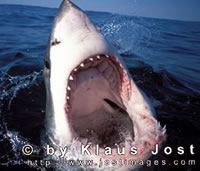










Comments
Add a comment